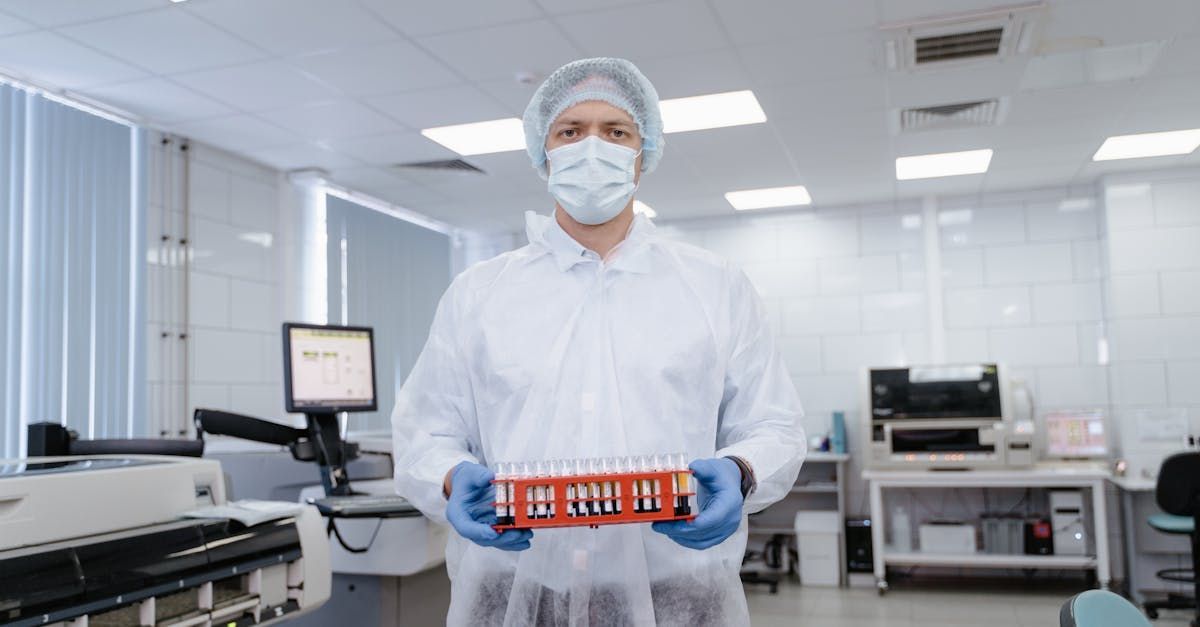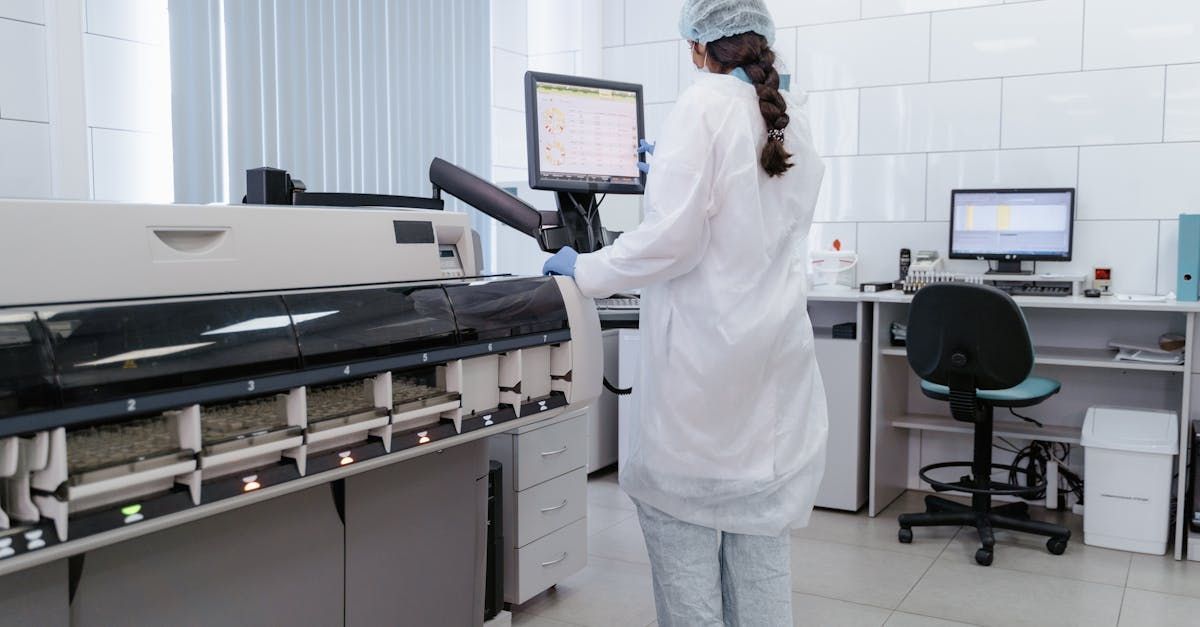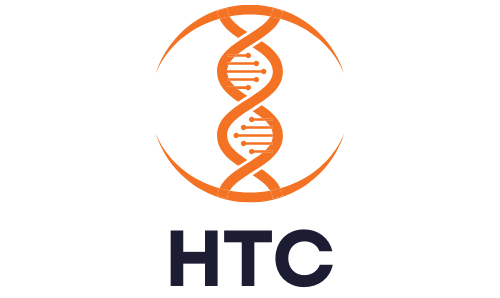HealthTech Innovations in Chronic Disease Management
Chronic diseases, such as diabetes, heart disease, and chronic respiratory conditions, are leading causes of death and disability worldwide. These long-term illnesses significantly impact the quality of life for millions and pose substantial challenges to healthcare systems globally. According to the World Health Organization (WHO), chronic diseases account for approximately 71% of all deaths annually, highlighting the urgent need for effective management strategies.
The rise of HealthTech—technologies designed to improve health outcomes—has brought new hope to the field of chronic disease management. By leveraging advanced tools and innovative solutions, HealthTech has the potential to transform how chronic conditions are monitored, treated, and managed. These innovations not only enhance patient care but also aim to reduce healthcare costs and improve overall health outcomes.
This blog aims to delve into the latest HealthTech innovations that are revolutionizing chronic disease management. We will explore how these technologies are addressing the challenges associated with chronic conditions and examine their impact on patients, healthcare providers, and the broader healthcare system. Join us as we navigate the evolving landscape of HealthTech and its promising role in enhancing the management of chronic diseases.
The Burden of Chronic Diseases
Statistics on the Prevalence of Chronic Diseases
Chronic diseases are a significant global health concern, affecting billions of people worldwide. According to the World Health Organization (WHO), non-communicable diseases (NCDs) such as cardiovascular diseases, cancers, chronic respiratory diseases, and diabetes are responsible for 71% of all deaths globally. In the United States alone, approximately 6 in 10 adults have a chronic disease, and 4 in 10 adults have two or more chronic diseases, according to the Centers for Disease Control and Prevention (CDC).
Economic and Social Impact of Chronic Conditions
The economic burden of chronic diseases is substantial. The CDC estimates that chronic diseases account for about 90% of the $3.8 trillion in annual healthcare costs in the United States. These costs include direct medical expenses and indirect costs such as lost productivity, long-term disability, and reduced quality of life. For instance, the American Diabetes Association reports that the total cost of diagnosed diabetes in the U.S. in 2017 was $327 billion, including $237 billion in direct medical costs and $90 billion in reduced productivity.
Socially, chronic diseases affect not only the individuals living with these conditions but also their families and communities. Chronic illnesses can lead to long-term disability, decreased quality of life, and increased caregiver burden. Patients often face challenges in maintaining employment, engaging in social activities, and performing daily tasks, which can lead to social isolation and mental health issues such as depression and anxiety.
Traditional Approaches to Chronic Disease Management
Traditionally, chronic disease management has relied heavily on routine clinical visits, medication adherence, and lifestyle modifications. Patients typically visit healthcare providers at scheduled intervals for monitoring and adjustments to their treatment plans. This approach often involves:
- Medication Management: Patients are prescribed medications to control symptoms and prevent disease progression. Adherence to medication regimens is crucial but can be challenging due to various factors such as side effects, complexity of regimens, and cost.
- Lifestyle Modifications: Patients are encouraged to adopt healthier lifestyles, including dietary changes, increased physical activity, smoking cessation, and stress management. These modifications require continuous motivation and support, which can be difficult to maintain over time.
- Patient Education and Self-Management: Educating patients about their conditions and promoting self-management practices are vital components of chronic disease management. This includes teaching patients how to monitor their symptoms, recognize warning signs, and take appropriate actions.
While these traditional approaches have been beneficial, they often fall short in providing continuous, personalized care. The episodic nature of clinical visits can lead to gaps in care, and the one-size-fits-all approach may not address the unique needs of each patient. This is where HealthTech innovations come into play, offering more dynamic, patient-centered solutions that enhance the management of chronic diseases.
HealthTech Solutions for Chronic Disease Management
Overview of Key HealthTech Innovations
The advent of HealthTech has revolutionized the landscape of chronic disease management, offering advanced tools and solutions that provide continuous, personalized care. Some of the key HealthTech innovations include:
- Remote Monitoring: Wearable devices and sensors enable continuous tracking of vital signs and health metrics, allowing for real-time data collection and remote monitoring by healthcare providers.
- Mobile Health Applications: Mobile apps offer platforms for patients to manage their conditions, access educational resources, track symptoms, and communicate with healthcare providers.
- Artificial Intelligence (AI): AI-driven tools analyze large datasets to identify patterns, predict disease progression, and personalize treatment plans, enhancing decision-making and care delivery.
- Telehealth: Virtual consultations and telemedicine platforms facilitate remote patient-provider interactions, reducing the need for in-person visits and increasing access to care.
- Electronic Health Records (EHRs): EHR systems integrate patient data from various sources, providing a comprehensive view of patient health and facilitating coordinated care among healthcare providers.
Examples of Technologies Improving Chronic Disease Management
- Continuous Glucose Monitors (CGMs):
- Use Case: Diabetes Management
- Description: CGMs are wearable devices that continuously measure glucose levels in real-time. They provide valuable insights into glucose trends, allowing patients and healthcare providers to make informed decisions about insulin dosages, diet, and exercise.
- Impact: Studies have shown that CGMs can significantly reduce HbA1c levels and decrease the risk of hypoglycemia in patients with diabetes.
- Cardiac Monitoring Devices:
- Use Case: Heart Disease Management
- Description: Wearable cardiac monitors track heart rate, rhythm, and other cardiac parameters. These devices can detect arrhythmias and other cardiac events, enabling early intervention and reducing the risk of complications.
- Impact: Remote cardiac monitoring has been associated with improved outcomes in heart failure patients, including reduced hospital readmissions and mortality rates.
- Smart Inhalers:
- Use Case: Asthma and Chronic Obstructive Pulmonary Disease (COPD) Management
- Description: Smart inhalers are equipped with sensors that track inhaler usage and monitor medication adherence. They can also provide reminders and alerts to patients.
- Impact: Studies have demonstrated that smart inhalers can improve medication adherence and reduce exacerbations in patients with asthma and COPD.
- AI-Powered Predictive Analytics:
- Use Case: Various Chronic Diseases
- Description: AI algorithms analyze patient data to predict disease progression, identify high-risk patients, and recommend personalized treatment plans. These tools can also assist in early diagnosis and prevention.
- Impact: AI-driven predictive analytics have shown promise in improving outcomes in conditions such as diabetes, heart disease, and cancer by enabling proactive and preventive care.
Case Studies of Successful HealthTech Solutions
- Livongo for Diabetes Management:
- Overview: Livongo is a digital health platform that integrates remote monitoring, personalized coaching, and data analytics to manage diabetes. Patients receive connected devices (such as glucometers) that sync with a mobile app, providing real-time data and insights.
- Results: A study published in the Journal of Medical Internet Research reported that Livongo users experienced a significant reduction in HbA1c levels and improved self-management behaviors. The platform's personalized coaching and real-time feedback contributed to better diabetes control.
- Propeller Health for Respiratory Diseases:
- Overview: Propeller Health offers smart inhalers and a mobile app to manage asthma and COPD. The platform tracks inhaler usage, monitors symptoms, and provides personalized insights and reminders to patients.
- Results: Clinical trials have shown that Propeller Health users experienced a 79% reduction in asthma attacks and a 50% increase in medication adherence. The platform's data-driven approach has improved symptom control and reduced hospitalizations.
- Omada Health for Chronic Disease Prevention:
- Overview: Omada Health is a digital health program designed to prevent chronic diseases such as diabetes and heart disease through lifestyle interventions. The program combines remote monitoring, personalized coaching, and behavior change strategies.
- Results: Research published in Diabetes Care indicated that participants in the Omada Health program achieved significant weight loss and improvements in cardiovascular risk factors. The program's emphasis on behavior change and continuous support has led to sustained health benefits.
These examples illustrate the transformative potential of HealthTech innovations in chronic disease management. By leveraging technology, healthcare providers can offer more effective, personalized care, ultimately improving patient outcomes and quality of life.
Telehealth and Remote Monitoring
The Role of Telehealth in Chronic Disease Management
Telehealth, the delivery of healthcare services via telecommunications technology, has become a cornerstone of chronic disease management. It enables patients to receive medical care, consultation, and monitoring from the comfort of their homes, which is particularly beneficial for those with chronic conditions that require ongoing management and frequent check-ins. The role of telehealth in chronic disease management includes:
- Enhanced Access to Care: Telehealth overcomes geographical barriers, providing access to specialist care for patients in remote or underserved areas.
- Continuous Monitoring and Follow-Up: Regular virtual check-ins allow healthcare providers to closely monitor patients' health status, adjust treatments promptly, and provide timely interventions.
- Patient Education and Support: Telehealth platforms often include educational resources and support tools, helping patients manage their conditions effectively.
- Reduced Healthcare Costs: By minimizing the need for in-person visits and hospitalizations, telehealth can significantly reduce healthcare costs for both patients and providers.
Benefits of Remote Monitoring for Patients and Healthcare Providers
Remote monitoring involves using digital devices and technology to collect and transmit health data from patients to healthcare providers. This approach offers several benefits:
- Improved Patient Outcomes: Continuous monitoring allows for early detection of potential issues, enabling timely interventions that can prevent complications and improve health outcomes.
- Patient Empowerment: Remote monitoring tools provide patients with real-time feedback on their health, encouraging proactive management and greater adherence to treatment plans.
- Enhanced Patient Engagement: Patients who use remote monitoring devices are more engaged in their healthcare, as they receive immediate insights into their condition and progress.
- Efficient Use of Resources: Healthcare providers can efficiently manage large patient populations, prioritize high-risk patients, and allocate resources more effectively.
- Data-Driven Decision Making: The data collected from remote monitoring devices can be analyzed to identify trends, predict disease progression, and inform personalized treatment plans.
Real-World Examples of Telehealth Platforms and Their Impact
- Teladoc Health:
- Overview: Teladoc Health is a global telehealth platform that provides virtual medical consultations, mental health services, and chronic disease management programs. It offers 24/7 access to healthcare professionals via video, phone, or mobile app.
- Impact: During the COVID-19 pandemic, Teladoc Health experienced a surge in demand, with millions of virtual visits conducted. Studies have shown that Teladoc users report high satisfaction rates, improved access to care, and reduced healthcare costs.
- American Well (Amwell):
- Overview: Amwell is a telehealth company that connects patients with healthcare providers for urgent care, chronic disease management, and mental health services. The platform supports video consultations, remote monitoring, and care coordination.
- Impact: Research published in the Journal of Telemedicine and Telecare found that Amwell's telehealth services improved medication adherence and chronic disease management outcomes. The platform's convenience and accessibility have enhanced patient satisfaction and engagement.
- Babylon Health:
- Overview: Babylon Health is a digital health service that uses AI and telehealth to provide medical consultations, health assessments, and chronic disease management. The platform offers virtual appointments, symptom checkers, and personalized health plans.
- Impact: A study published in The Lancet Digital Health demonstrated that Babylon Health's AI-driven consultations were effective in diagnosing and managing chronic conditions. The platform's combination of AI and telehealth has expanded access to care and improved health outcomes.
- MySugr:
- Overview: MySugr is a mobile health app designed for diabetes management. It integrates with continuous glucose monitors (CGMs) and other devices to track blood sugar levels, provide insights, and offer personalized coaching.
- Impact: Users of MySugr have reported improved blood glucose control, increased adherence to treatment plans, and enhanced self-management. The app's user-friendly interface and comprehensive features have made it a valuable tool for diabetes patients.
Telehealth and remote monitoring are reshaping the landscape of chronic disease management. These technologies offer innovative solutions that improve patient outcomes, enhance healthcare delivery, and reduce costs, making them indispensable tools in the fight against chronic diseases.
AI and Predictive Analytics
The Use of AI in Predicting and Managing Chronic Conditions
Artificial Intelligence (AI) has emerged as a powerful tool in predicting and managing chronic conditions. By leveraging vast amounts of data, AI can identify patterns, predict disease progression, and personalize treatment plans. The key roles of AI in chronic disease management include:
- Predictive Analytics: AI algorithms analyze patient data to predict the likelihood of disease onset, progression, and potential complications. This enables proactive and preventive care, reducing the risk of adverse outcomes.
- Personalized Treatment: AI tailors treatment plans based on individual patient profiles, optimizing therapy effectiveness and minimizing side effects.
- Early Detection: AI tools can detect early signs of chronic diseases from medical records, imaging, and genetic data, facilitating timely intervention and improved prognosis.
- Remote Monitoring and Decision Support: AI-driven platforms support continuous monitoring and provide real-time decision support to healthcare providers, enhancing patient care and management.
Innovative AI Tools and Platforms
- IBM Watson Health:
- Overview: IBM Watson Health uses AI to analyze medical data and provide insights for chronic disease management. It offers predictive analytics, personalized treatment recommendations, and clinical decision support.
- Innovations: Watson Health's AI capabilities are utilized in oncology to identify the most effective cancer treatments, in cardiology to predict heart disease risk, and in diabetes management to optimize insulin therapy.
- Google Health:
- Overview: Google Health develops AI-powered tools for healthcare, including applications for chronic disease management. The platform integrates machine learning with electronic health records (EHRs) to provide predictive insights and personalized care.
- Innovations: Google Health's AI models can predict acute kidney injury (AKI) 48 hours before it happens, helping prevent severe complications. Its tools also assist in early detection of diabetic retinopathy through retinal imaging analysis.
- Health Catalyst:
- Overview: Health Catalyst uses AI and analytics to improve healthcare outcomes. Its platform provides predictive analytics, risk stratification, and care management tools for chronic disease patients.
- Innovations: Health Catalyst's AI-driven Population Health Suite helps healthcare providers identify high-risk patients, personalize care plans, and track outcomes, leading to better chronic disease management.
Case Studies of AI Applications in Chronic Disease Management
- Diabetes Management with BlueStar by Welldoc:
- Overview: BlueStar is an FDA-cleared digital health platform that uses AI to provide personalized diabetes management. The app offers real-time coaching, medication reminders, and data-driven insights.
- Results: Clinical studies have shown that BlueStar users experienced significant reductions in HbA1c levels, improved medication adherence, and enhanced self-management. The AI-driven recommendations and real-time feedback were key contributors to these outcomes.
- Heart Disease Management with Cardiologs:
- Overview: Cardiologs uses AI to analyze electrocardiograms (ECGs) for early detection of cardiac arrhythmias. The platform leverages machine learning to identify abnormalities and assist in diagnosis.
- Results: A study published in the European Heart Journal demonstrated that Cardiologs' AI algorithm achieved high accuracy in detecting atrial fibrillation and other arrhythmias. The platform's ability to provide rapid and accurate analysis improved the management of heart disease patients.
- Chronic Obstructive Pulmonary Disease (COPD) Management with Coala Life:
- Overview: Coala Life is a remote monitoring platform that uses AI to analyze heart and lung sounds for managing COPD and other chronic conditions. The device captures and transmits data to healthcare providers for real-time assessment.
- Results: Research published in the Journal of Medical Internet Research highlighted that Coala Life's AI-driven monitoring reduced COPD exacerbations and hospitalizations. Patients reported greater confidence in managing their condition due to the continuous monitoring and feedback.
- Kidney Disease Management with RenalytixAI:
- Overview: RenalytixAI uses AI to predict kidney disease progression and personalize treatment plans. The platform integrates clinical data, genetic information, and biomarkers to provide risk assessments.
- Results: A study published in Kidney International Reports showed that RenalytixAI's KidneyIntelX platform accurately predicted kidney disease progression and identified patients at high risk for rapid decline. The AI-driven insights enabled more effective and targeted interventions.
The integration of AI and predictive analytics into chronic disease management holds great promise for improving patient outcomes and transforming healthcare delivery. By harnessing the power of AI, healthcare providers can deliver more personalized, proactive, and effective care to patients with chronic conditions, ultimately enhancing their quality of life and reducing the burden of chronic diseases.
Mobile Apps and Wearable Devices
The Role of Mobile Apps and Wearables in Managing Chronic Diseases
Mobile apps and wearable devices have become essential tools in the management of chronic diseases. These technologies provide real-time monitoring, data collection, and personalized feedback, empowering patients to take an active role in managing their health. Key roles include:
- Continuous Monitoring: Wearable devices track vital signs, physical activity, sleep patterns, and other health metrics, providing continuous data that can be shared with healthcare providers for better disease management.
- Patient Engagement: Mobile apps offer interactive platforms for patients to log symptoms, monitor progress, receive educational content, and engage in health-promoting activities.
- Medication Management: Apps can send reminders for medication adherence, track dosages, and alert users to potential drug interactions.
- Behavioral Support: Many apps include features for setting health goals, tracking lifestyle changes, and providing motivational support, which are crucial for managing chronic conditions.
Examples of Popular Apps and Devices
- Fitbit:
- Overview: Fitbit is a widely-used wearable device that tracks physical activity, heart rate, sleep, and other health metrics. It syncs with a mobile app to provide comprehensive health insights and personalized recommendations.
- Impact: Studies have shown that Fitbit users often increase their physical activity, improve sleep quality, and enhance overall health awareness. The device's ability to provide continuous feedback and goal-setting features fosters sustained engagement in health-promoting behaviors.
- MyFitnessPal:
- Overview: MyFitnessPal is a mobile app that helps users track their diet and exercise. It includes a vast food database, barcode scanning for easy logging, and tools for setting and monitoring health goals.
- Impact: Research has indicated that users who consistently log their meals and exercise with MyFitnessPal are more successful in achieving weight loss and maintaining healthy eating habits. The app's comprehensive tracking and user-friendly interface promote long-term adherence to healthy behaviors.
- Apple Watch:
- Overview: The Apple Watch is a multifunctional wearable device that offers advanced health monitoring features, including heart rate tracking, ECG capabilities, and blood oxygen monitoring. It integrates with the Health app on iOS for a seamless health management experience.
- Impact: The Apple Watch has been praised for its accuracy and user engagement. Its health monitoring features have been particularly beneficial for users with heart conditions, providing early detection of irregularities and enabling prompt medical attention.
- Glucose Buddy:
- Overview: Glucose Buddy is a diabetes management app that allows users to log blood glucose levels, insulin doses, carbohydrate intake, and physical activity. It provides detailed reports and trends to help users and healthcare providers make informed decisions.
- Impact: Users of Glucose Buddy have reported improved glycemic control and better understanding of how lifestyle factors affect their blood sugar levels. The app's logging and analytical features enhance self-management and adherence to treatment plans.
Impact of Continuous Monitoring and Patient Engagement
Continuous monitoring and patient engagement are critical components of effective chronic disease management. The impact of these technologies includes:
- Early Detection and Intervention: Continuous monitoring enables the early detection of potential health issues, allowing for timely interventions that can prevent complications and improve outcomes.
- Personalized Care: Data from wearables and apps provide valuable insights into individual health patterns, enabling healthcare providers to tailor treatment plans to each patient's unique needs.
- Improved Medication Adherence: Reminders and tracking features help patients adhere to their medication regimens, reducing the risk of adverse events and improving disease control.
- Enhanced Patient Empowerment: Access to real-time health data and personalized feedback empowers patients to take an active role in managing their conditions, leading to better self-management and health outcomes.
- Increased Motivation and Support: Features such as goal-setting, progress tracking, and social support within apps and wearables help maintain motivation and encourage sustained engagement in health-promoting behaviors.
Case Studies of Impactful Mobile Apps and Wearable Devices
- Dexcom G6 Continuous Glucose Monitor (CGM):
- Overview: The Dexcom G6 CGM is a wearable device for diabetes management that continuously measures glucose levels and sends data to a mobile app. It provides real-time glucose readings, trend graphs, and alerts for high and low blood sugar.
- Results: Clinical studies have shown that users of the Dexcom G6 experience significant improvements in glycemic control, reduced HbA1c levels, and fewer hypoglycemic events. The device's real-time data and alerts enhance patient safety and self-management.
- Kaia Health for Chronic Pain:
- Overview: Kaia Health is a mobile app that provides digital therapy for chronic pain management. It offers personalized exercise programs, educational content, and mindfulness techniques to help users manage pain.
- Results: A randomized controlled trial published in JMIR mHealth and uHealth reported that users of Kaia Health experienced significant reductions in pain intensity and disability compared to a control group. The app's comprehensive approach to pain management supports effective self-care and improved quality of life.
- AliveCor KardiaMobile:
- Overview: KardiaMobile is a portable ECG device that pairs with a mobile app to provide on-the-go heart health monitoring. Users can record ECGs, detect atrial fibrillation, and share data with their healthcare providers.
- Results: Research published in the European Heart Journal showed that KardiaMobile's ECG recordings had high accuracy in detecting atrial fibrillation. The device's portability and ease of use make it a valuable tool for patients with heart conditions, facilitating early detection and intervention.
Mobile apps and wearable devices are transforming the management of chronic diseases by providing continuous monitoring, enhancing patient engagement, and enabling personalized care. These technologies empower patients to take control of their health, improve adherence to treatment plans, and ultimately lead to better health outcomes. As HealthTech continues to evolve, the potential for further innovations in this space holds great promise for the future of chronic disease management.
Personalized and Preventive Care
The Shift Towards Personalized Care Through HealthTech
HealthTech is at the forefront of a significant shift towards personalized care, moving away from the traditional one-size-fits-all approach to a more tailored strategy that considers individual patient differences. This personalized approach is made possible by advanced technologies that analyze vast amounts of patient data, including genetic information, lifestyle factors, and medical history, to develop customized treatment plans. Key components of this shift include:
- Precision Medicine: Leveraging genetic and molecular data to customize treatments that are most effective for individual patients.
- Patient-Centered Care: Focusing on the specific needs, preferences, and values of patients, ensuring that healthcare decisions align with their unique circumstances.
- Data Integration: Utilizing data from various sources such as electronic health records (EHRs), wearable devices, and mobile apps to gain a comprehensive understanding of a patient’s health status.
Predictive Analytics and Preventive Measures Enabled by Technology
Predictive analytics in healthcare uses data mining, machine learning, and statistical algorithms to predict future health outcomes based on historical data. This proactive approach allows for the identification of at-risk individuals and the implementation of preventive measures to avert disease onset or progression. Key benefits include:
- Early Detection of Diseases: Predictive models can identify early signs of chronic diseases, allowing for timely interventions that can prevent disease progression.
- Risk Stratification: Patients can be categorized based on their risk levels, enabling healthcare providers to prioritize high-risk patients and allocate resources more effectively.
- Personalized Preventive Plans: By analyzing individual risk factors, healthcare providers can develop personalized preventive care plans, including lifestyle modifications, screenings, and vaccinations.
Case Studies of Personalized Interventions
- Notable Labs for Cancer Treatment:
- Overview: Notable Labs uses AI and machine learning to analyze the effectiveness of cancer drugs on patient-specific tumor cells. By testing various treatments on live cancer cells from the patient, Notable Labs identifies the most effective therapy.
- Results: Notable Labs’ approach has led to more targeted and effective cancer treatments, improving patient outcomes and reducing the trial-and-error period typically associated with cancer therapy. In several cases, patients have experienced significant tumor reduction and improved quality of life due to the personalized treatment recommendations.
- 23andMe for Genetic Insights:
- Overview: 23andMe is a direct-to-consumer genetic testing company that provides personalized health reports based on DNA analysis. The service offers insights into genetic predispositions for various health conditions, allowing individuals to take preventive measures.
- Results: Users of 23andMe have reported making significant lifestyle changes and engaging in preventive health measures based on their genetic risk factors. For example, individuals with a high genetic risk for type 2 diabetes have adopted healthier diets and increased physical activity, leading to better overall health outcomes.
- Color Genomics for Hereditary Cancer Risk:
- Overview: Color Genomics offers genetic testing for hereditary cancer risk, providing individuals with information about their genetic predisposition to cancers such as breast, ovarian, and colorectal cancer.
- Results: The identification of high-risk individuals has led to increased surveillance, early detection, and preventive interventions such as prophylactic surgeries. Patients have benefited from personalized risk management plans, resulting in reduced incidence and severity of hereditary cancers.
- HeartFlow for Cardiovascular Disease:
- Overview: HeartFlow uses advanced imaging and AI to create a personalized 3D model of a patient’s coronary arteries. This model helps doctors assess the severity of coronary artery disease (CAD) and plan appropriate interventions.
- Results: Clinical trials have shown that HeartFlow’s technology reduces the need for invasive diagnostic procedures, improves diagnostic accuracy, and leads to better-targeted treatments. Patients have experienced fewer complications and better management of their cardiovascular health due to these personalized assessments.
The integration of personalized and preventive care through HealthTech is transforming healthcare by providing more accurate, efficient, and tailored interventions. These innovations not only enhance patient outcomes but also contribute to a more sustainable healthcare system by focusing on prevention and individualized treatment. As HealthTech continues to advance, the potential for even greater personalization and preventive care will further revolutionize chronic disease management.
Recap of key points discussed
Throughout this blog, we've explored how HealthTech innovations are revolutionizing the management of chronic diseases. Key points include:
- The Burden of Chronic Diseases: Chronic diseases are a significant global health concern, leading to substantial economic, social, and personal impacts.
- HealthTech Solutions: Innovations such as remote monitoring, mobile health applications, and AI are transforming chronic disease management by providing continuous, personalized care.
- Telehealth and Remote Monitoring: Telehealth enhances access to care and continuous monitoring, reducing healthcare costs and improving patient outcomes.
- AI and Predictive Analytics: AI-driven tools predict disease progression and personalize treatments, enabling early detection and preventive care.
- Mobile Apps and Wearable Devices: These technologies empower patients with real-time data and personalized feedback, enhancing self-management and engagement.
- Personalized and Preventive Care: HealthTech facilitates a shift towards personalized medicine, leveraging predictive analytics and data integration for tailored interventions.
HealthTech innovations hold immense potential in transforming chronic disease management. By integrating advanced technologies, healthcare can move towards a more proactive, patient-centered approach. These technologies enable early detection, personalized treatments, and continuous monitoring, leading to improved health outcomes and quality of life for patients with chronic conditions. The shift from reactive to preventive care not only enhances patient well-being but also alleviates the burden on healthcare systems, making care more efficient and cost-effective.
As we look to the future, it is crucial to support and adopt innovative HealthTech solutions. Stakeholders, including healthcare providers, patients, policymakers, and technology developers, must collaborate to foster an environment conducive to technological advancements. Here are a few ways to support this initiative:
- Healthcare Providers: Embrace HealthTech tools to enhance patient care, stay updated with the latest innovations, and integrate these technologies into clinical practice.
- Patients: Be proactive in managing your health by utilizing available HealthTech solutions, participating in preventive care programs, and providing feedback to improve these tools.
- Policymakers: Support policies that promote the development and adoption of HealthTech, ensure data privacy and security, and provide funding for research and innovation.
- Technology Developers: Continue to innovate by creating user-friendly, effective HealthTech solutions that address the unique needs of patients with chronic diseases.
The future of chronic disease management is bright with the promise of HealthTech. By supporting and adopting these innovations, we can pave the way for a healthier, more sustainable future. Together, we can transform the landscape of chronic disease management, improving lives and making a significant impact on global health.










